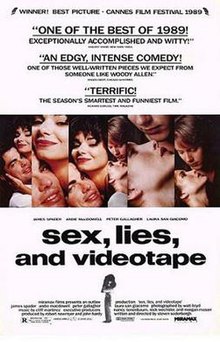Welcome to my blog series about my passion to the movies and television. I hope you enjoy what I have to say when I express my opinions and you are free to have your own thoughts.
Thursday, March 29, 2018
Reader's Guide to Pulp Fiction (Spoiler Warning)
This is a readers guide for Quentin Tariantino's 1994 masterpiece, Pulp Fiction. The film contains 4 interconnected stories of violence, crime, and redemption. This film has made a cultural impact for it's non linear structure, complex characters, and character driven dialogue. This reader's guide contains why these 3 elements were necessary along with elements of the film that are open for interpretation. If you're confused by the film on your first viewing, this list might help you understand why these elements work if you're planning to give the film a second viewing. One word of warning though, this list may contain spoilers so make sure you watch the movie before you read this list.
Non-linear structure: Most movies have typical 3 act structures that basically consists of buildup, conflict, and resolution. While not all 3 act structures are bad, they sometimes can get formulaic. Quentin Tarintino intentionally mixes up his chronology to figure out the events of the movie for themselves instead of guessing what's going to happen next. It also allows ambiguity, and mystery into the plot instead of spelling out information to the audience.
Character-driven dialogue: There are so many movies when dialogue pushes the plot forward and the characters weren't given time to say interesting things. This is not the case with Pulp Fiction. There are long stretches of the characters talking about things they are passionate about because the dialogue is much more interesting than the cookie cutter dialogue that you hear from routine films. The dialogue also gives the audience time to know the characters. If these long stretches were cut from the film, we wouldn't know the characters well.
Character development: I complained on my Mighty Morphin' Power Rangers The Movie review that the characters were cookie cutter and one dimensional. The characters in Pulp Fiction are rich, interesting, and fully developed. Each of the characters have distinct personalities and they develop by redeeming themselves. The biggest character development in the film comes from Jules (Samuel L. Jackson), who is sick and tired of being a hit man for the mob. His development takes place at the end of the film when he holds a robber hostage and plays peacemaker during a robbery at a diner. He spares the robber and saves a lot of customers.
The glowing briefcase: The glowing briefcase is the film's MacGuffin. A MacGuffin is a device or object that serves as a trigger for the plot. The glowing briefcase is also open for interpretation because we never see what's really in that briefcase. Some people think it was drugs and money, others think the glow is actually the soul of crime boss Marsellus Wallace (Ving Rahmes). If you want a behind the scenes example, the glow is obviously a small light bulb operated by two battery packs.
The band aid on Marsellus Wallace's head: The band aid on the back of Marsellus Wallace's head was also open for interpretation, but it was never intended to be ambiguous. Ving Rahmes actually cut himself shaving while preparing for the role. When he put the band aid on, Tarantino liked the image of the band aid on his head and kept it in the movie.
Central Theme: The central theme of Pulp Fiction is redemption because each of the 4 stories end with the characters redeeming themselves and saving others. John Travolta saves Uma Thurman from dying of a drug overdose. Bruce Willis saves Ving Rahmes from sado-masochists. And Samuel L. Jackson foils a diner robbery operated by Tim Roth and Amanda Plummer.
This concludes this reader's guide to Pulp Fiction. I hope you see the film and read this article after you see the film.
Subscribe to:
Posts (Atom)
How The 90s Indie Boom Changed And Challenged American Cinema?
In the 90s, a new generation of younger filmmakers were making their most renowned works either in or out of the major Hollywood studios. Th...

-
WHERE HAVE I BEEN: 2022 was a really busy year for me. I've been through four family weddings in the past summer and fall. It's also...
-
On May 28th, 1993, two iconic video game characters named Mario and Luigi arrived on the big screen. With a budget of $48 million, it gro...
-
Before I write the article, I would like to tell you about my vacation to North Carolina. I had a good time with my family. We went swimming...
_poster.jpg)